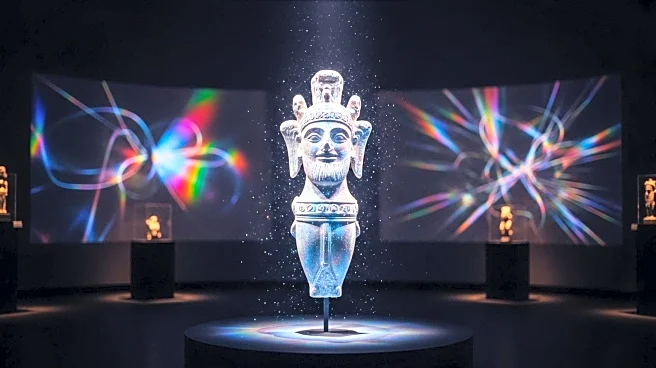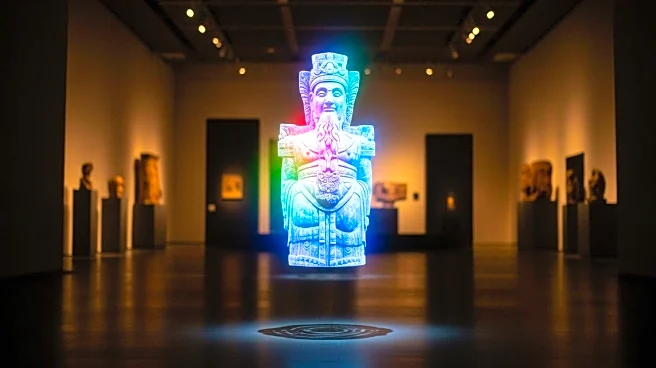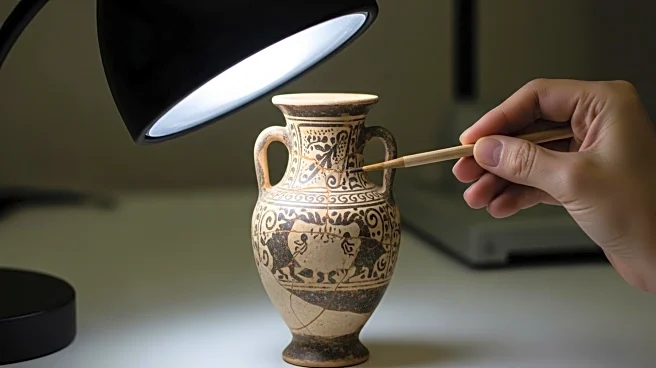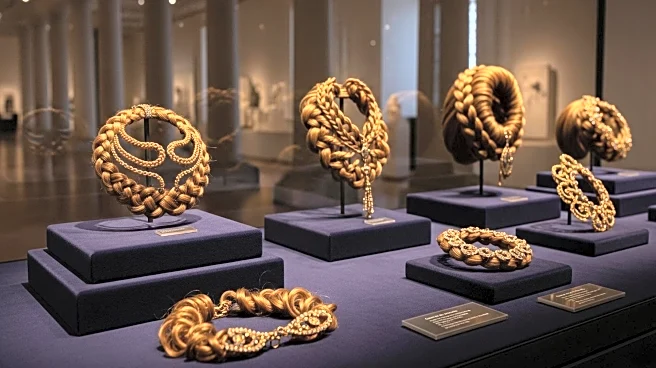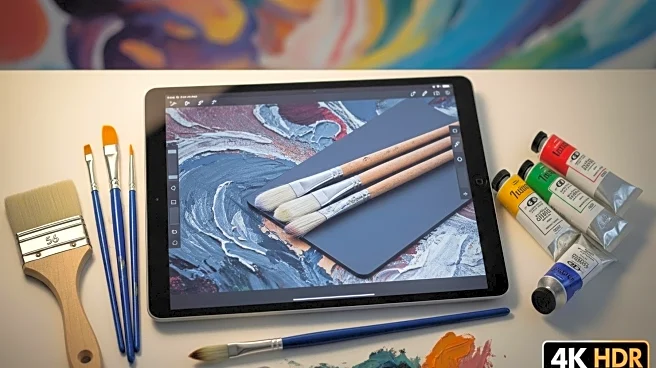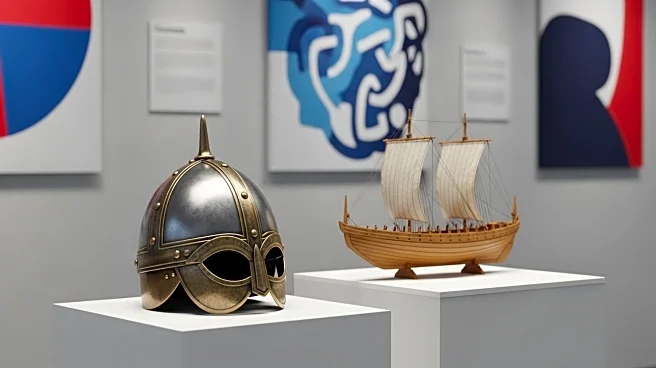What's Happening?
Museums are increasingly adopting holographic technology to enhance the presentation of historical artifacts and improve visitor engagement. This technology allows museums to display 3D composite images and holograms, offering a realistic and immersive experience. Holography addresses challenges such as gallery constraints, fragile artifacts, and high insurance costs by replacing real objects with holograms. The Byzantine and Christian Museum in Athens, for example, uses OptoClones to document and display its collection, providing visitors with accurate perceptions of artifacts. Holography also serves as a preservation tool, allowing researchers to document and reconstruct artifacts before further degradation occurs.
Why It's Important?
The integration of holographic technology in museums represents a significant advancement in cultural heritage preservation and accessibility. By using holograms, museums can overcome traditional constraints related to artifact preservation and display, making rare and fragile objects accessible to a wider audience. This technology also enhances visitor engagement by providing a dynamic and immersive experience. As museums face challenges in displaying and preserving artifacts, holography offers a viable solution that can extend the reach of collections while maintaining an authentic visual experience. The adoption of holographic technology could set a precedent for other cultural institutions, influencing how they approach artifact preservation and visitor engagement.
What's Next?
Museums may continue to explore and expand the use of holographic technology, potentially collaborating with technology experts to develop more advanced applications. This could involve creating more detailed and lifelike holograms, as well as integrating holography with other digital media technologies. As the technology evolves, museums might also consider using holography for temporary exhibitions or touring displays, allowing them to share their collections with a broader audience. The success of holographic displays could encourage other cultural institutions to adopt similar technologies, leading to a wider acceptance of holography in the field of cultural heritage preservation.
Beyond the Headlines
The use of holographic technology in museums raises questions about the future of artifact preservation and the role of technology in cultural heritage. As museums increasingly rely on digital solutions, they must balance the benefits of technology with the need to preserve the authenticity and value of physical artifacts. Holography offers a unique opportunity to enhance visitor engagement while preserving cultural heritage, but it also challenges traditional notions of artifact display and preservation. The adoption of holographic technology could lead to new ethical considerations and debates about the role of technology in cultural institutions.

